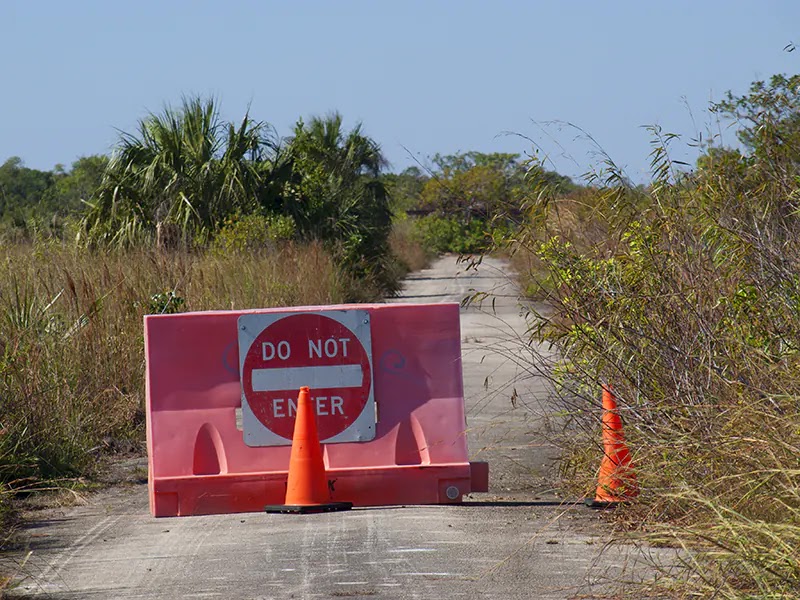Homosassa Springs State Park: The spring with an old underwater observatory
No river can return to its source, yet all rivers must have a beginning.
Native American proverb.

|
| The underwater observatory of the Homosassa Springs State Park, Florida - License our images here. |
Here we found a mix of state park and zoo. A zoo only for Florida wildlife. The name: "Ellie Schiller Homosassa Springs Wildlife State Park". I always ask who creates these long names. Politicians? We found another seven-words-long name in a state park of the Florida Keys - "Windley Key Fossil Reef Geological State Park". Don't make me count the number of characters. Ugly names.
The park is on the headwaters of the Homosassa River and close to the Gulf of Mexico. The floating platform of the previous photo is a relic from the past. But before I share historic photos from Homosassa Springs State Park, check this video with some of our pictures.
Meaning of “Homosassa”
Meaning of “Homosassa”
There are various interpretations for the Seminole-Creek word "Homosassa". One is "a place where
wild pepper grows", other refers to "smoking creek" - maybe for the fog in the cool days of winter -, and there are also "river of fishes" and "pepper ridge". Checking the
English/Seminole Vocabulary: As documented during the Second Seminole
War 1835-1842, compiled and edited by Debra Kay Harper, the word "Homosassa" means "pepper range". I guess there were plenty of wild peppers in Homosassa.
The old history
Every winter, manatees swim upstream on the Homosassa River looking for warmer waters. This massive amount of potential food brought Native Americans here thousands of years before the first Spaniard set foot on Florida.
In 1539, Hernando de Soto landed by the Indian town of Ocita in Tampa Bay and walked through this region. Old chronicles say that he visited the village of
Tocaste - likely around Floral City, roughly 20 miles east
of Homosassa. Probably his scouts contacted the locals
who lived by the springs.
After Florida became part of the US, the
Florida Armed Occupation Act of 1842
opened the area to American settlers and, in 1840, William Cooley arrived at Homosassa. He came from South Florida, where he lost his wife and children on
January 4 of 1836 in the New River Massacre. This happened by the actual city of Fort Lauderdale at the start of
the Second Seminole War. Cooley became the first
postmaster of Homosassa and candidate to the Florida House of
Representatives for Hernando County. Later, he moved to Tampa and sold parts of his land to David Yulee.
According to records, Yulee bought land in Homosassa by 1843.
The town grew when investors bought riverfront properties
on the Homosassa River by 1886. A year later, the railroad arrived and connected the area to Ocala via the Dunnellon-Homosassa extension. By the 1900, Homosassa Springs became an obligated stop
for train passengers.

|
| Nature's Giant Fish Bowl post card collection - State Archives of Florida. |
The first park
A small attraction opened at the springs in 1945. It was
named the "Nature’s Giant Fish Bowl". The famous Dave Newell was part owner of the park. He was a naturalist, hunter, journalist, writer, and illustrator. Newell also worked as editor of the magazine Field and Stream and hosted radio and television shows. Later, he produced a film about Homosassa Springs called "Nature’s Giant Fish Bowl".
From these times comes the most famous photo of Bod Moreland, the
award-winning photographer of the St. Petersburg Times.

|
| Postcard promoting the park with the work of Bob Moreland - State Archives of Florida. |
The construction of the I-75 in the 1960s stole many visitors from Homosassa Springs. The new and more convenient highway bypassed the area on its way to Tampa.

|
| Under a new name - State Archives of Florida. |
Reinventing the park
The Norris Development Company bought and expanded the park
in 1964. He promoted Homosassa Springs as "Nature's Own Attraction." This company, led by Bruce Norris from New York, also demolished the
original Riverside Lodge built by B.F. Dutton.

|
Dunn, Hampton, "B.F. Dutton residence, Homosassa, Fla" (1907) - Hampton Dunn Collection of Florida Postcards. |
Norris built a resort with 74 rooms and amenities. He also brought
the underwater observatory to the springs. The new addition opened in 1964, allowing visitors to get close to the "fish bowl" over the springs without getting wet. There the slogan, "Walk under water among 1000s of
fish".

|
| Old photo of the underwater observatory - State Archives of Florida. |
In the 1970s the springs got another hit with the new parks of Disney in Orlando. Nature and its fishes can't compete with Mickey Mouse. Norris sold his park in 1978 and, after a few changes in ownership, it
ended in the hands of Citrus County six years later.

|
| Homosassa Springs in 1972 - State Archives of Florida/McLendon. |
Homosassa Springs Wildlife State Park
The state of Florida bought the park in 1989 and reshaped the attraction to host only Florida wildlife. The exotic animals were removed except for one.

|
| Lu at 8. Photo from 1983. - State Archives of Florida. |
Lu the hippo
Lu was the star of the park. Full name: Lucifer. But nothing diabolic, even if Lu could throw poop in your direction. Nothing personal, hippos spray dung
to mark their territory. In the wild, they also warn intruders with "wheeze
honks" - check
this video.
This hippo was a retired artist. Born in San Diego, Lu was a star of Ivan Tors, the producer of many movies and series involving animals - among
them, Flipper.

|
| Lu in 1972 - State Archives of Florida/Hackett. |
Lu is the only hippo in the world with an "honorary
citizenship". Menaced with deportation for not being a wildlife native of Florida, Governor Lawton Chiles came to
the rescue. Lu was saved because of its seniority in Homosassa Springs. This hippo is also the oldest in North America. In 2020, it reached 60
years old.
Sources:
Henry Goes For Homosassa Springs, Henry Lemore, Miami Herald, 1950.
Route of the Hernando de Soto expedition, 1539-1543, National Park Service, 1988.
Back-woods Country Along the Gulf Coast, Washington Post, 1989.
Homosassa Springs Theme Park Becomes a State Park Emphasizing Native
Wildlife, Los Angeles Times, 1990.
A pool of their own at last for captive manatees, Tampa Bay Times, 1999.
Past, present blend at Homosassa Springs, Tampa Bay Times, 1999.
Looking Back ... at Times staff photographer Bob Moreland, Tampa Bay Times, 2017.
Happy 120th Birthday, Dave Newell, Walter J. Brown Media Archives Blog.
Our Favorite Homosassa Springs Resident: Lu the Hippo, Authentic Florida, 2021.
How a Hippo Became a Honorary Florida Citizen, Free the McGees, 2021.
Ellie Schiller Homosassa Springs State Park, Florida State Parks.


